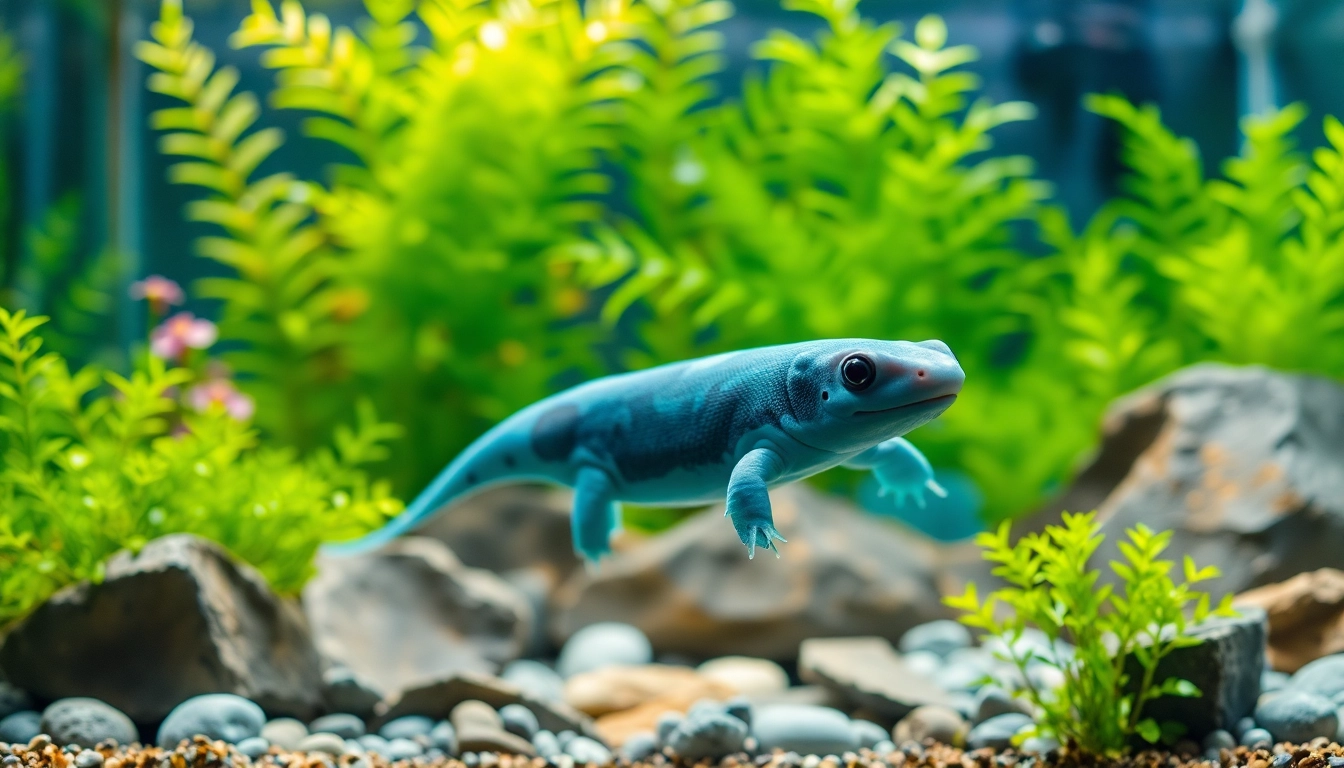Understanding AR Cycles and Their Importance for Axolotls
What are AR Cycles?
AR (Aquarium Recycling) cycles refer to the biological process that establishes a healthy environment in an aquarium by fostering beneficial bacteria. These bacteria play a critical role in breaking down harmful waste products, such as ammonia and nitrites, which are toxic to aquatic life, including axolotls. The cycle typically involves three stages: ammonia oxidation where ammonia is converted to nitrite, nitrite oxidation where nitrite is converted to nitrate, and finally, nitrate conversion which can be managed via water changes or plant uptake. Understanding these stages is crucial for maintaining a healthy tank and ensuring the wellbeing of your axolotl.
Why AR Cycles Matter for Axolotls
Axolotls, being aquatic salamanders, are incredibly sensitive to water quality. The importance of AR cycles cannot be overstated as it directly affects their health and longevity. Poorly cycled tanks often result in elevated levels of ammonia and nitrite, leading to stress, illness, or even death among axolotls. A well-established AR cycle promotes a balanced ecosystem, provides a stable environment, and drastically reduces the frequency and intensity of water changes needed, ultimately enhancing the quality of life for your pet. The utilization of systems and products like how to improve AR cycles with Axolt can further aid in establishing and maintaining this crucial biological process.
Common Misconceptions About Aquarium Cycling
Many new aquarium enthusiasts have misconceptions regarding the cycling process that can lead to poor management. One prevalent myth is that adding fish or axolotls can accelerate cycling by adding waste; however, this can cause extreme stress and toxicity within the tank. Another misunderstanding is that cycling can be completed in a matter of days. In reality, fully establishing an AR cycle typically takes 4-6 weeks. Recognizing these misconceptions early and informing your approach is vital for ensuring a successful and healthy tank setup.
Steps to Improve AR Cycles in Your Aquarium
Setting Up a Sustainable Environment
The foundation of a successful AR cycle lies in setting up an optimal aquarium environment. Start by selecting an appropriate tank size. A larger tank usually fosters a more stable ecosystem. Ensure the tank has an adequate filtration system, as filters promote water circulation and provide a surface for beneficial bacteria to colonize.
Additionally, carefully select substrate and decorations that foster bacterial growth while ensuring they are safe for axolotls. Gravel can trap wastes, whereas sand or bare-bottom setups are often preferred to simplify cleaning. Moreover, incorporating a variety of plant species can help by absorbing nitrates and enhancing oxygen levels, thereby further supporting the cycling process.
Introducing Beneficial Bacteria
Introducing beneficial bacteria is a crucial step in jump-starting the cycling process. You can source these bacteria from a few different methods. One approach is to use a bacterial supplement from an aquarium store, specifically designed to introduce these microorganisms into your aquarium. Alternatively, you can utilize filter media or substrate from an established tank, allowing for immediate bacterial transference.
It’s essential to monitor ammonia and nitrite levels closely after this introduction. Many aquarium owners use test kits to track these parameters, which will provide insight into whether the bacterial colony is establishing effectively and help prevent potential spikes in toxic levels before sufficient nitrification occurs.
Regular Maintenance Tips and Best Practices
Once your aquarium is set up and bacterial populations are established, regular maintenance becomes key. Perform weekly water changes of 10-20% to dilute any accumulated toxins without disrupting the cycling process. Avoid using tap water containing chlorine and chloramines without proper treatment, as these chemicals can hinder bacterial growth.
Another recommendation is to avoid overfeeding your axolotls, as uneaten food contributes to waste buildup, leading to spikes in ammonia and nitrite. Instead, offer only what they can consume within a short period, and remove any uneaten food promptly. Regularly inspect and clean the filter, as a dirty filter can cause reduced flow and water quality issues.
Monitoring Water Quality for Better AR Cycles
Key Water Parameters to Track
Monitoring water quality is an essential aspect of maintaining a healthy aquarium. Key parameters to track include:
- Ammonia: Should ideally be at 0 ppm. Toxic to axolotls, even small amounts can be detrimental.
- Nitrite: Also, should be at 0 ppm. Like ammonia, nitrite is harmful and should be monitored closely during the cycling process.
- Nitrate: Generally tolerated up to 20-40 ppm. Regular water changes can help keep nitrate levels in check.
- pH: Ideally around 6.5 to 7.5. Regularly test and adjust as necessary to maintain a stable environment.
- Temperature: Axolotls prefer cooler waters, ideally between 60-68°F (15-20°C).
Tools and Techniques for Monitoring
Investing in reliable water testing kits is paramount for successful monitoring. Test kits can come in the form of strips or liquid tests, but liquid tests generally offer more accurate results. Ensure you test for the parameters mentioned previously at least once a week during the initial cycling phase.
Additionally, consider using a digital thermometer for accurate temperature readings and ammonia alert systems that notify when levels spike. Keeping a log of your water parameters not only helps identify patterns but also serves as a reference for future decisions regarding your aquarium maintenance and adjustments.
Signs of a Healthy Tank vs. a Problematic One
Recognizing the signs of a healthy aquarium versus a problematic one can be the difference between proactively managing your tank and facing a crisis. In a healthy tank, you will notice:
- Clear water with no foul odor.
- A stable pH, ammonia, and nitrite levels at 0, and manageable nitrate levels.
- Vibrant plants showing healthy growth.
- Active and alert axolotls.
Conversely, signs of a problematic tank may include cloudiness or foul odors, lethargic axolotls, abnormal swimming patterns, or visible signs of distress like gasping for air at the surface. If you notice any of these signs, testing water quality and implementing immediate corrective actions is necessary.
Integrating Axolt Products for Enhanced AR Cycling
Recommended Axolt Products for Your Setup
Axolt offers a variety of products to enhance AR cycling that can markedly improve your aquarium’s health. Some recommended products include:
- Bacterial Additives: These products introduce beneficial bacteria quickly into the tank.
- Water Conditioners: To remove chlorine and chloramines from tap water and create a healthier environment.
- pH Adjusters: To help maintain the optimal pH for axolotls.
- Nitrate Removers: Specific filters or additives that help reduce nitrate levels, promoting better overall water quality.
Case Studies: Success Stories Using Axolt
Numerous aquarists have reported improved results by integrating Axolt products into their aquarium setups. In a case study, one user shared how the use of Axolt bacterial additives shortened their cycling time significantly, achieving stability in just three weeks, and their axolotls thrived. The improvement was evident as they enjoyed their habitat without the typical signs of stress, such as decreased activity or faded coloration.
Another testament to Axolt’s efficacy comes from a community forum where users recommend their water conditioners for maintaining clear and healthy water. The collective experiences demonstrate that utilizing high-quality products tailored for axolotls can lead to both happier pets and less maintenance stress for owners.
How to Choose the Right Products for Your Needs
Choosing the right Axolt products is straightforward. Consider the specific challenges your tank faces, such as elevated nitrate levels or slow cycling. Conduct research on product effectiveness and consult reviews or community feedback, as many aquarists share their experiences online.
Additionally, evaluate your tank’s size and bioload. Smaller tanks may require different products than larger aquariums with high fish populations. If unsure, consult with knowledgeable staff at aquarium stores or join community forums for recommendations based on similar tank setups.
Frequently Asked Questions about Improving AR Cycles with Axolt
What Happens If My Tank is Not Cycled?
Placing an axolotl in an uncycled tank results in them living in their waste, due to the absence of beneficial bacteria to convert toxic ammonia and nitrites. This can lead to a host of health problems, such as severe stress, decreased immune response, and potentially death if not rectified in time. It is vital to ensure your aquarium is fully cycled before adding your axolotl.
How Long Does It Take to Cycle an Axolotl Tank?
Cycling an axolotl tank can typically take anywhere from 4 to 6 weeks. Factors influencing this timeframe include the presence of beneficial bacteria, the volume of water, the introduction of ammonia sources, and the overall stability of the environment. Be patient, as rushing the process may lead to detrimental spikes in toxic levels.
Can Plants Help with the Cycling Process?
Absolutely, live plants can expedite the cycling process by using ammonia, nitrite, and nitrate as nutrients for growth. They contribute to maintaining water quality, providing additional filtration, and enhancing oxygen levels through photosynthesis. Incorporating live plants not only enriches the environment for axolotls but also supports the establishment of a stable and healthy AR cycle.



